We take five with Wendy Geitz, Geyer’s first female CEO, to hear what’s on the agenda for steering the design practice, and get her thoughts on what exactly makes a great leader.

March 13th, 2018
Wendy Geitz has recently been announced as Geyer‘s new CEO. With thirty years experience in the industry along with sharp business acumen, Geitz is poised to continue the growth of one of Australia’s largest interior design practices.
Wendy Geitz: My first priority is talking to the Geyer team and our clients to understand the opportunities we have. Due to its incredible culture, Geyer is distinctively placed to take advantage of new thinking across industries and within design itself. We’ll be exploring how we can build that into our day-to-day way of working, our business and operating models, continuing the tradition of designing for our clients and not ourselves.
We’ll be looking at service extensions that make sense for our clients and our people, again with the core mantra of designing great environments and experiences for our clients. But I can’t tell you much more for now. You’ll need to wait and see.
Design thinking is fundamental to the way I create and solve. I was fortunate enough to work within Lendlease in the 90’s where it was the norm. We didn’t use the term then, but it was common practice to solve problems and build things using design thinking methodologies. And when I led DEGW, design thinking was a foundation principle.
Design thinking in its raw form is critical. It’s so important not to miss key stages like immersing and exploring the problem, and then testing your ideas. People tend to struggle with and even miss these stages. The human desire to solve something and rapidly move away from the discomfort of the unknown is immense and can kybosh the process (check out Daniel Kahneman’s book Fast and Slow Thinking if you want to understand this more).
The essence is, if you don’t know what you are solving how can you build solutions. I can generate enormous numbers of ideas, as can most designers. But the critical test is developing ideas that have real impact. So you need to observe, probe, listen and explore, and ultimately truly test your ideas.
The difference between a good and a great leader is that they are truly committed, show humility, have the strength to question things – even show doubt, and a relentless drive to push through.
They are both a catalyst and a rudder knowing where the organisation is going AND putting in the hard yards to get there. Sometimes being in the trenches supporting their people. Sometimes being the storyteller connecting people to the dream, getting the heart and head to work as one.
They work beyond their own personal agenda and are highly committed to the big picture, even doing themselves out of a job if that’s what it takes.
They embolden their team for greatness, helping people believe they are good at what they do, knowing what success looks like, and most importantly bringing out their strengths. They’re not afraid of their own weaknesses and see them as an opportunity for others to shine.
They are often disruptors, not accepting the world as it’s supposed to be. And if that means stepping on some toes then that’s okay too. This often means they’re quite candid, having the insight to see what’s going on.
And lastly, they act decisively, expertly balancing the desire for information and getting on with it, building that decision-making capacity across the organisation.
I developed enormous respect for my design teams when client side. They were truly a partner, well beyond providing great aesthetics. More importantly they had our backs throughout the process. This requires great strength and value, and I believe it’s underrated not only with clients but within design companies.
I’m fascinated by the business models that persist in the A+D community. The legacy of deep hierarchies in large organisations and the fear that they may not get the next job at times drives behaviours that I believe destroy value. Winning the next job at all costs, especially in a downturn, has huge impacts. Over many years, the margins have been driven down leaving little room to invest. To halt this behaviour will take great insight across the industry.
And leaders in the industry need to help their people anchor their success in the outcomes of what they create, not just the beauty. That’s being overly simplistic, but you can always feel when someone has designed from a deep understanding of their clients, from a deep respect. The result just makes sense, makes you smile and often challenges you. This thinking can even help when you get a constrained budget.
I feel privileged to be leading such an amazing company full of talented people. But aspiring to reach any role or status, including CEO, is not how I view the world or my career. In fact, I would prefer to have no title on my business card.
I like to think about the impact I can make, in whatever role I’m in, and how I can grow in that experience. It’s also about using my core strengths of leading people and being brave to lean in to change.
It’s a fascinating time in design. Boundaries across disciplines are being blurred, the notion of work is changing, and technology is transformative.
Clients are increasingly smarter and understand that space and place impact their people and business success. Business cycle times are getting shorter, and variability greater, which creates even more complex circumstances to design within.
Geyer is well placed to take advantage of these changes and at its core believes intelligent, beautifully designed spaces inspire people, and inspired people create value for organisations.
INDESIGN is on instagram
Follow @indesignlive
A searchable and comprehensive guide for specifying leading products and their suppliers
Keep up to date with the latest and greatest from our industry BFF's!
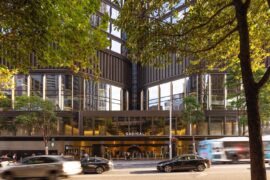
Rising above the new Sydney Metro Gadigal Station on Pitt Street, Investa’s Parkline Place is redefining the office property aesthetic.
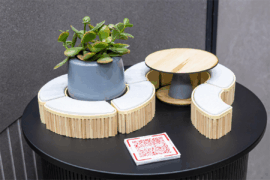
From the spark of an idea on the page to the launch of new pieces in a showroom is a journey every aspiring industrial and furnishing designer imagines making.
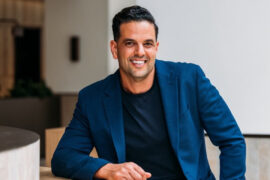
From Valmont to GEYER VALMONT, Marcel Zalloua walks us through some of the milestones of what has been a fruitful, busy career in design.

At the heart of this workplace design for Richard Crookes Constructions’ (RCC) is a visual and functional anchor that houses collaborative and utility areas, ensuring adaptability for future demands.
The internet never sleeps! Here's the stuff you might have missed

Making a splash on the hair spa scene, the latest project from X + O makes a little slice of Japan right at home in suburban Melbourne.
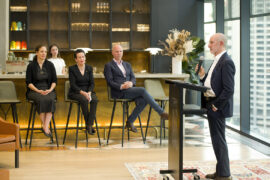
The eponymous practice founder reflects on four decades of work in a new book launched by Lord Mayor Clover Moore, tracing lessons from New York to Sydney and revisiting seminal works including 8 Chifley Square and the Andrew “Boy” Charlton Pool.
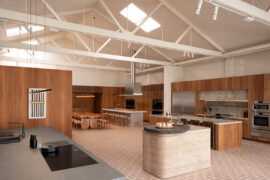
The Fisher and Paykel Melbourne Experience Centre by Clare Cousins Architects with Fisher and Paykel Design and Alt Group has been awarded The Retail Space at the INDE.Awards 2025. As a winning project, it redefines the possibilities of retail architecture by creating an immersive, material rich environment shaped by place, culture and craft.